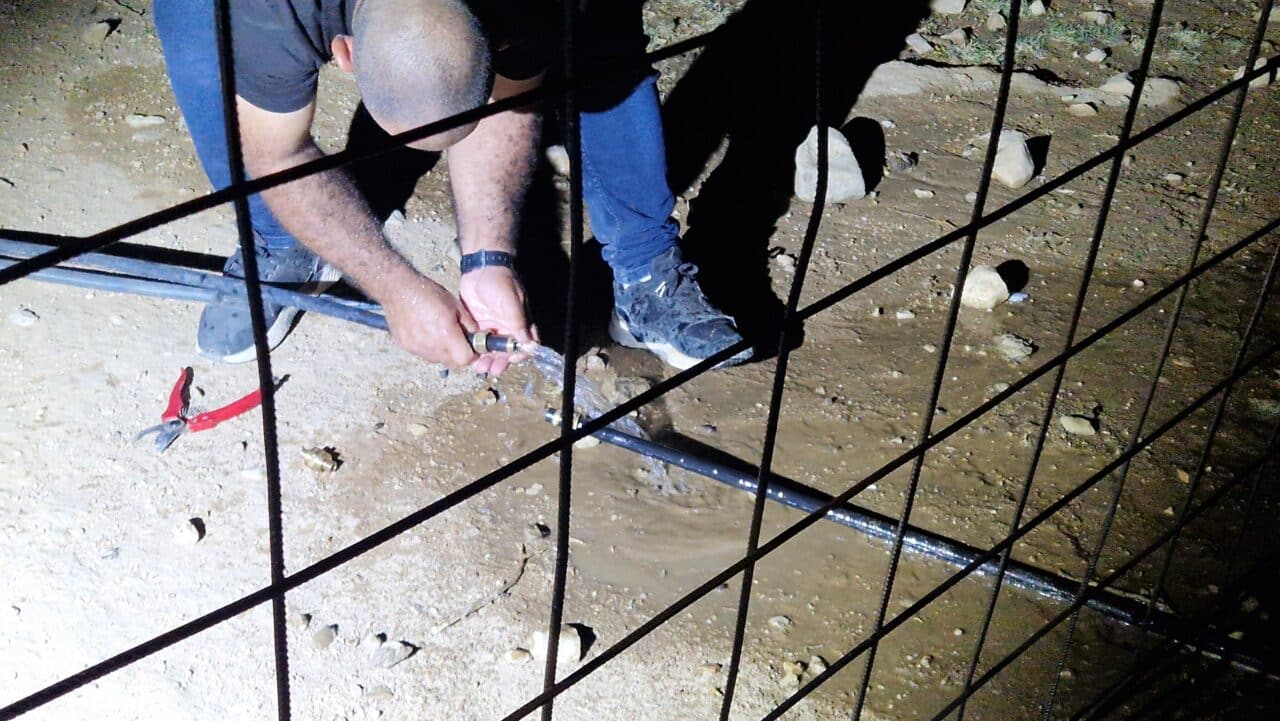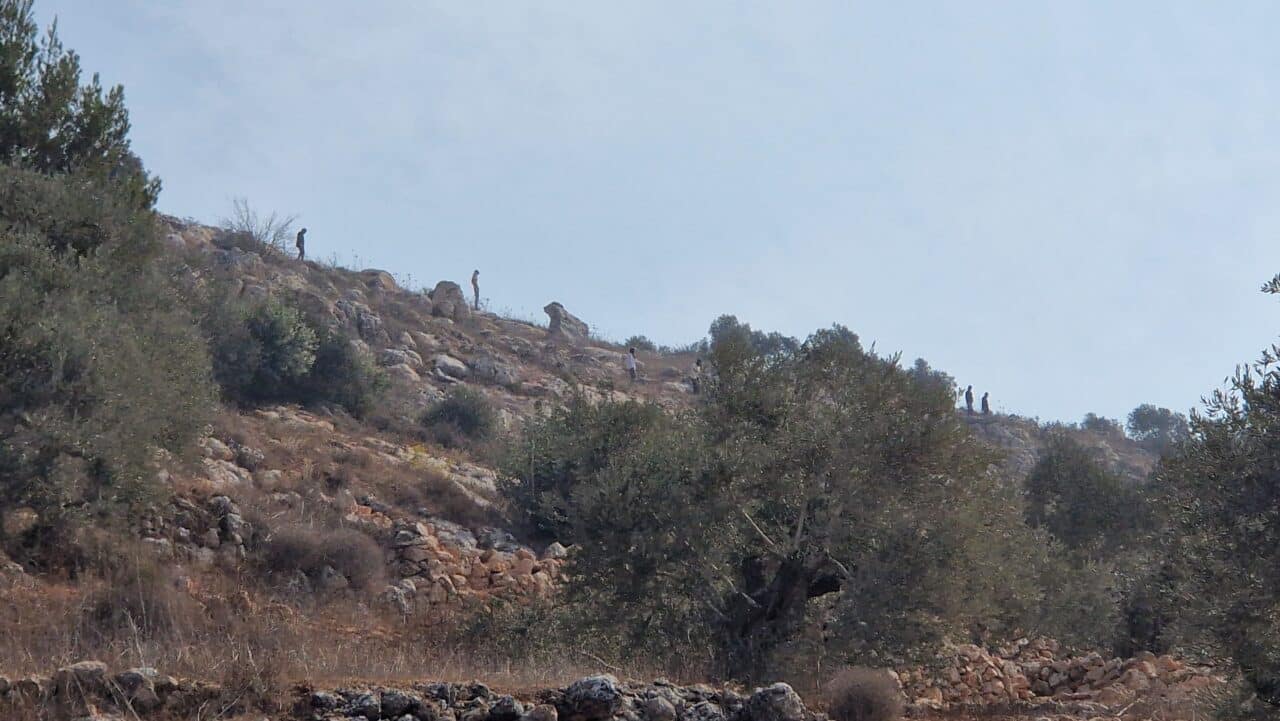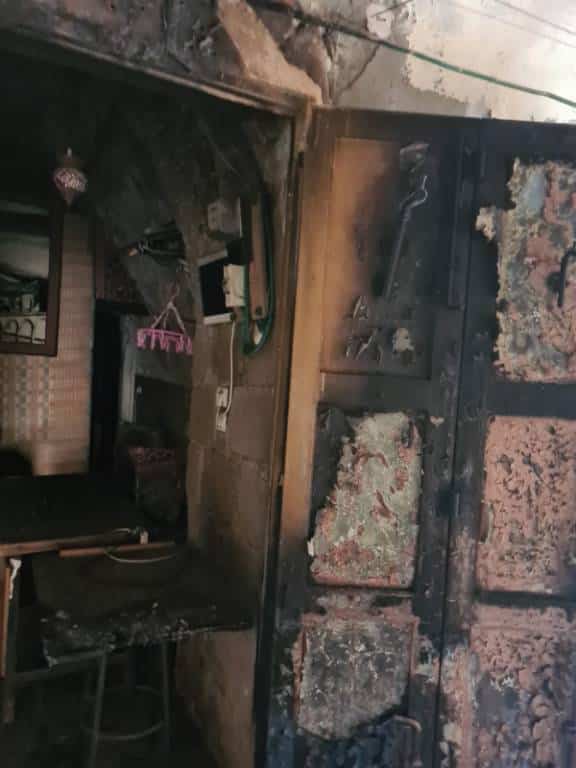-

Fasayil al Wusta: Forced Displacement Continues in the Jordan Valley
Palestinian households in the village of Fasayil al Wusta, located in the Jordan Valley north of Jericho, have been facing increasing harassment and attacks over the past month. As a result, five families decided to leave the area on Thursday, November 6. Only one family remains, still resisting despite displacement efforts. Fasayil al Wusta lies […]
-

For immediate release – Olive Harvest: Settlers Injure Palestinian Farmers, Journalists and Medics and Solidarity Activists in Beita
Media enquiries: palreports@gmail.com On Saturday, November 8, Masked Israeli settlers armed with clubs attacked Palestinian farmers and solidarity activists, with many hospitalized after, in the Jabal Qamas area of Beita, south of Nablus, near the recently established Mevaser Shalom outpost, built on Beita’s confiscated land. After a few hours of successful olive harvest, a group […]
-

Firebombing in Al-Khalil
A trail of charcoal tire tracks are an unwelcome sight this morning in Hebron’s old city, tracing a grim path past shuttered shops and beneath wire netting that sags with the weight of rubbish, bottles, and stones thrown from above. A tailor’s shop and car were firebombed last night by Israeli colonizers in the Old […]
Action Alert An Nabi Saleh Apartheid Wall Arrests BDS Bethlehem Bil'in Cast Lead Demonstration Denial of Entry Ethnic Cleansing Farmers Gaza Global Actions Hebron House Demolition International law Israeli Army Jerusalem Live Ammunition Nablus Ni'lin Prisoner Ramallah Rubber-coated steel bullets Settlement Settlers Settler violence Tear-Gas Canister Video
